2022 marks the 100th anniversary of the end of the Heroic Age of Antarctic Exploration. This was a 25-year period from 1897-1922 when 17 pioneering Antarctic expeditions were launched from ten different countries.
Of course, at the time, these men did not call themselves heroes, although they did consider themselves pioneers. The expeditions were extremely physically demanding and tested the limits of human endurance, exceeding them in many cases: 19 members of the 17 expeditions lost their lives.
Modes of transport were limited to wooden sailing ships, dog sleds, and ponies, and many miles were covered on foot. Fuel for heating and other supplies were imported by sled from supply ships, which were unable to penetrate far into the pack ice. Supplies sometimes ran out or expeditioners were stranded for long periods and had to hunt for food.
The British explorers were in part funded by the British Geological Society and the Royal Geographical Society, so there was serious scientific and surveying work to be undertaken along the way. However, the primary objective of many of the explorers themselves was to be the first to reach the South Pole.
The significance of the Heroic Age is best understood in its historical context. There had been a keen interest in exploring the Earth’s remotest region for centuries, but this remained largely unfulfilled due to the enormous practical difficulties. British explorer James Cook was one of the first to travel within the Antarctic Circle, and his second expedition (1772–1775) came back with new and surprising charts of the southern seas.
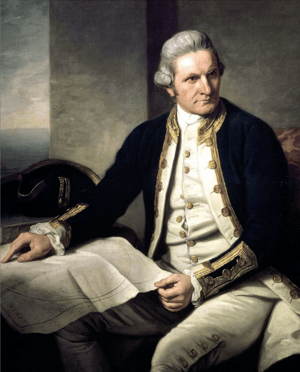 A portrait of James Cook. Source: Canva
A portrait of James Cook. Source: Canva
The first expedition of the Heroic Age is generally considered to be one launched by the Belgian Geographical Society in 1897. The crew was international, and this was the first group of people to winter in the Antarctic.
From 1901-1904, Shackleton led a trailblazing expedition officially called the British National Antarctic Expedition, popularly known as the Discovery, after the name of the ship – the last traditional wooden three-masted vessel built in the UK (in 1901). Organized jointly by the Royal Society & Royal Geographical Society, many geographical features were discovered, including the longest river in the Antarctic as well as several groups of islands and species.
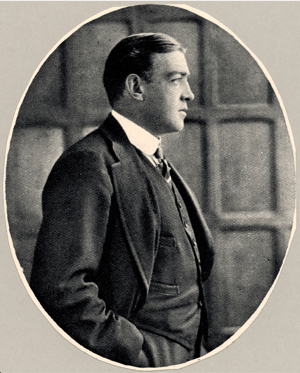 Portrait of Ernest Shackleton. Source: Canva
Portrait of Ernest Shackleton. Source: Canva
In 1902, Robert F. Scott, Edward Wilson and Ernest Shackleton attempted to reach the South Pole. They covered 3,100 miles (5,000 kilometers), but were forced to give up after two months, due to snow blindness and illness. (The South Pole lies at 90° and they got as far as the 82°17′S point). On their return, they were said to be “almost unrecognizable”, with long beards, dirty hair, swollen lips, peeled complexions and bloodshot eyes.
Shackleton went on to lead three successful Antarctic expeditions, the first being the 1909 British Antarctic Expedition, when the ship Nimrod almost reached the South Pole (getting within 100 miles, at 88° 23' S). On the way, Shackleton stopped off at places from Captain Robert Falcon Scott’s trip, which the latter had claimed as his own “field of work” – and this spurred Scott on to try and surpass him.
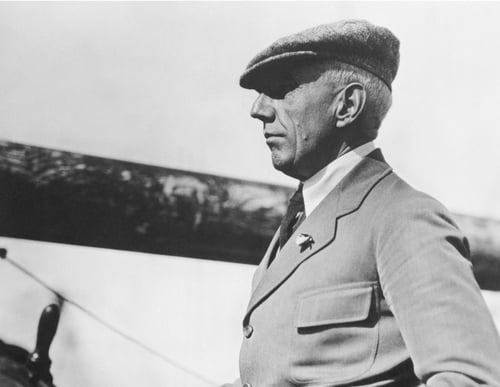
Roald Amudsen. Source: Canva
In 1911 Norwegian Roald Amundsen and four other men set off across the ice towards the South Pole, purely focussed on reaching their objective, without any scientific surveying to do. Thanks to a new route that took them only 57 days, they were the first to reach their objective, on December 14.
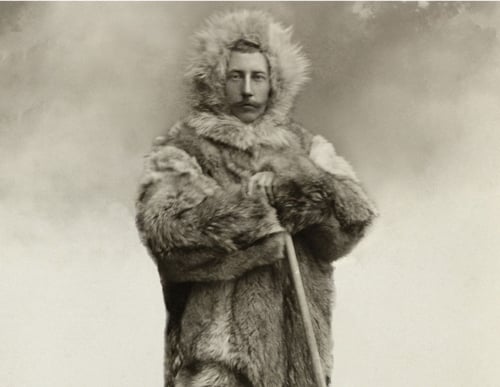
Roald Amundsen in polar gear after the Belgian Antarctic expedition of 1897 to 1899. When the expedition's ship, BELGICA, became trapped in the ice, the men were the first Europeans to winter over in the Antarctic region. Source: Canva
After many setbacks, on January 18, 1912, Robert F. Scott, Edward Wilson, Edgar Evans and Lawrence Oates finally reached the South Pole, only to discover a Norwegian flag and letters left at the site, telling them that Amundsen had arrived 33 days earlier. The British expedition’s return journey was even more arduous and the sled team that was supposed to bring them supplies failed to meet them. By that time they were pulling their sleds by hand. Lawrence Oates, an ex-army officer who had contracted severe frostbite in his hands and feet, thus slowing down progress even further, famously – and heroically – said: "I am just going outside and may be some time." He never returned. In the end, Scott and his companions all died just 11 miles from the "One Ton” supplies depot. Their fateful journey was famously documented in journals, in which Scott’s last known words are recorded:
“Great God! This is an awful place and terrible enough for us to have laboured to it without the reward of priority. Had we lived, I should have had a tale to tell of the hardihood, endurance and courage of my companions which would have stirred the heart of every Englishman. These rough notes and our dead bodies must tell the tale.”
The team’s very last letter, written by Edward Wilson, was not found until 2011. He wrote:
“This looks like a finish to our undertaking, for we are out of food and oil and not able to move for three days now on account of the blizzard. We have had a long struggle against intense cold on very short fuel, and it has done us in.”
They had reached their goal and died in the attempt.
In 1914 Ernest Shackleton led the Imperial Trans-Antarctic Expedition, with the intention of being the first to cross Antarctica from coast to coast by sled. But their ship, the Endurance, became stuck in ice in the Weddell Sea and spent the winter of 1915 drifting slowly northwards until it was eventually crushed by pack ice and sank, leading to a heroic struggle for survival. Shackleton and his men were forced to camp on an ice floe for five months. Eventually, the floe broke up, and in April 1916 the crew of 27 set off in three 22-foot lifeboats for the uninhabited Elephant Island over 100 miles away, reaching it eight days later.
Shackleton then set off with five other men to travel a further 500 miles to get help at South Georgia. They arrived 17 days later but were forced to land on the uninhabited side and trek across the unmapped island to the Norwegian whaling station at Stromness. It took a further 105 days for the rescue team to reach the men Shackleton had left on Elephant Island at the end of August. All 28 had survived.
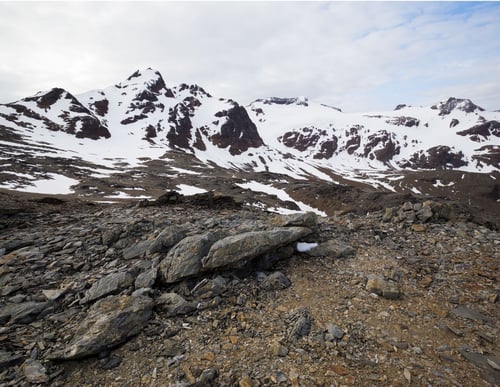
The final mountain pass Ernest Shackleton took before he reaches safety. Source: Canva
Shackleton has since become a role model for leadership under extreme circumstances. Fellow explorer Sir Raymond Edward Priestley once said: "Scott for scientific method, Amundsen for speed and efficiency but when disaster strikes and all hope is gone, get down on your knees and pray for Shackleton".
1922 saw the last expedition in what came to be known as the Heroic Age of Antarctic Exploration. Shackleton teamed up with Rowett, who financed a voyage on the Quest, a converted seal-hunting boat. However, the Quest was rather small and unable to break up the pack ice – with Shackleton unexpectedly dying on board of a heart attack just before landing at South Georgia. His grave is at Grytviken, in Fortuna Bay.
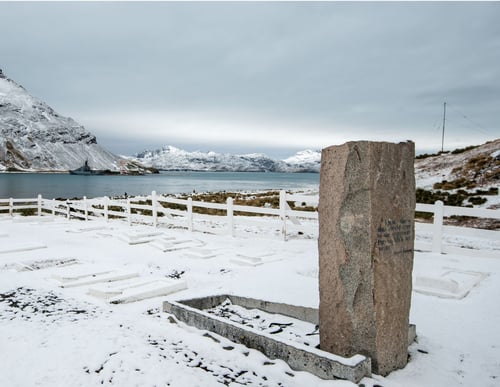
The grave of Sir Ernest Shackleton in South Georgia. Source: Canva
The heroic age gave way to the mechanical age. Antarctic exploration continued, but with additional gadgets and “luxuries”. Crow’s nests became electrically heated, and the lookouts wore heated overalls. There were also wireless sets and automatic route plotters. The heroic era of intense endurance and survival had come to an end, but the legacy of those brave pioneers lives on.
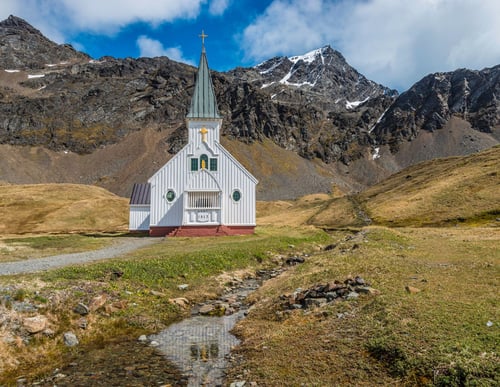
Whalers' Church at Grytviken, South Georgia. Consecrated on Christmas Day in 1913. Funeral of Sir Ernest Shackleton held here on January 5, 1922. Source: Canva
Dare to tread in the footsteps of heroes:





